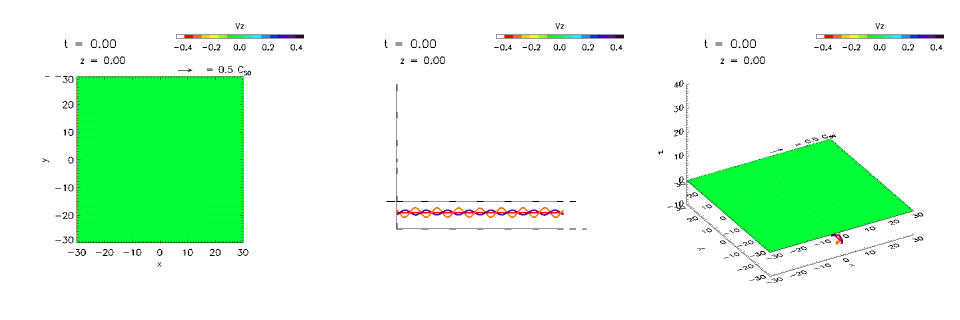
Three-dimensional evolution of selected emerging field lines (purple and orange => outer (envelope) field lines, red => inner (axis) field line). Contours and colors indicate vertical magnetic flux density and vertical flow velocity in solar surface (photosphere).

Expressions for magnetic energy flux (Eq. 22) and relative magnetic helicity flux (Eq. 23) in photosphere. In both equations, the first term (shear term) represents contribution of horizontal flow (vx, vy), while the second term (emergence term) contribution of vertical flow (vz).
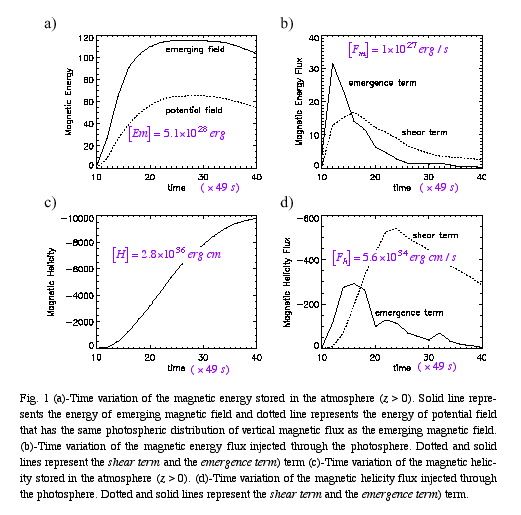
Flux emergence generates not only vertical flow but also horizontal flow in photosphere, both of which contribute to injecting magnetic energy and relative magnetic helicity. The emergence term related to the vertical flow is dominant at the early phase of the flux emergence, while the shear term related to the horizontal flow (shear and/or rotational flow) becomes a dominant contributor at the late phase.
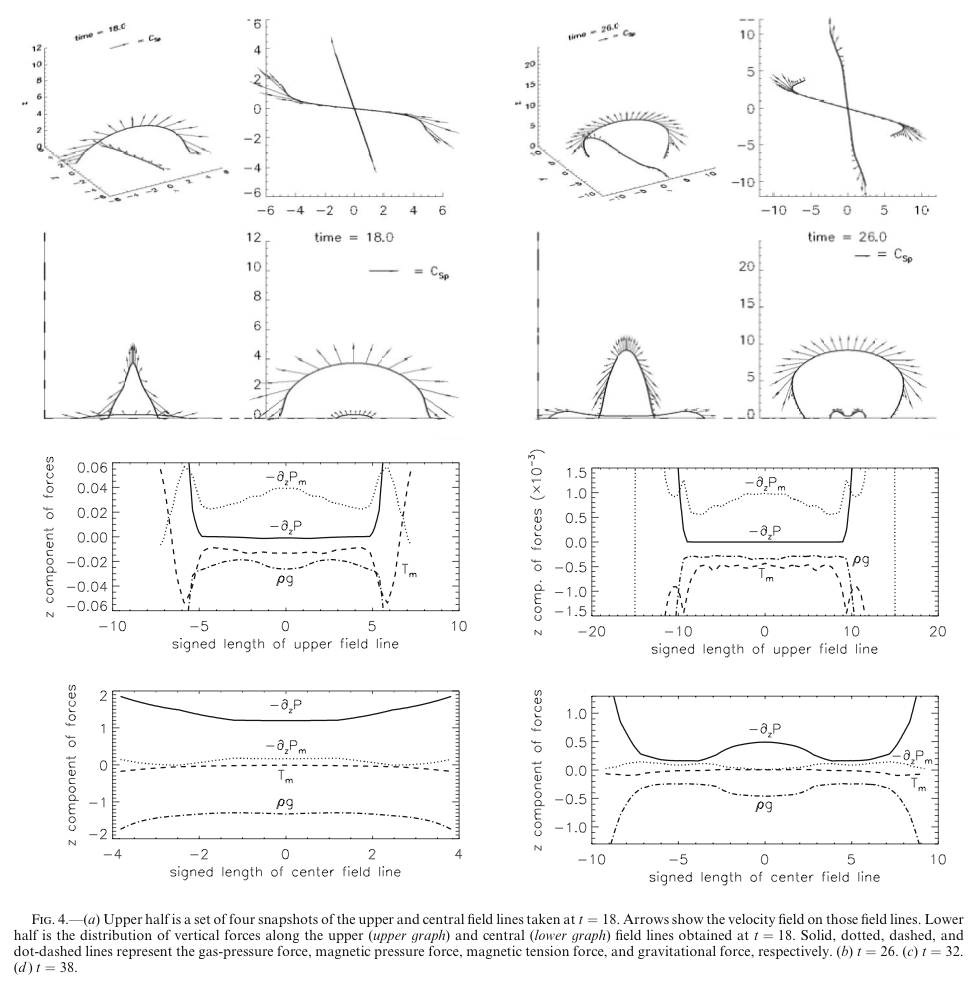

Evolution of main polarity region and associated flow.
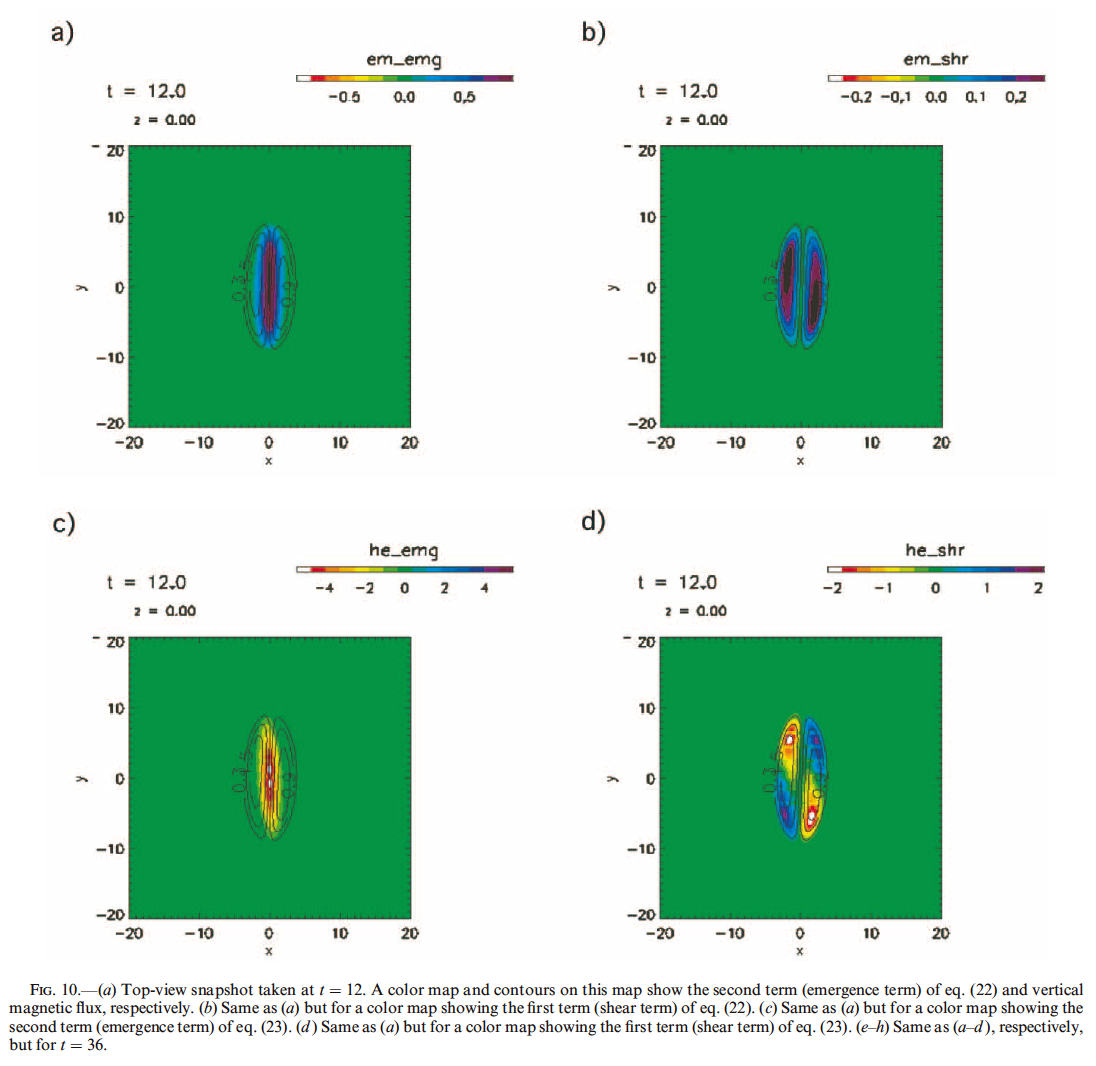
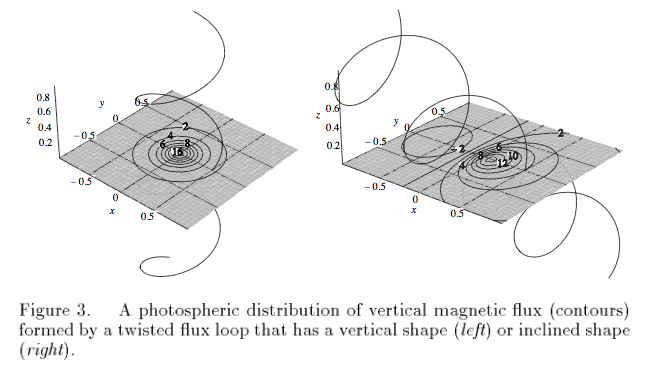
When a leg of emerging twisted flux tube is vertical to photosphere, only main polarity region is produced there (left panel). On the other hand, when the leg is inclined, satellite polarity region is produced in addition to the main polarity region (right panel; Magara 2004).









